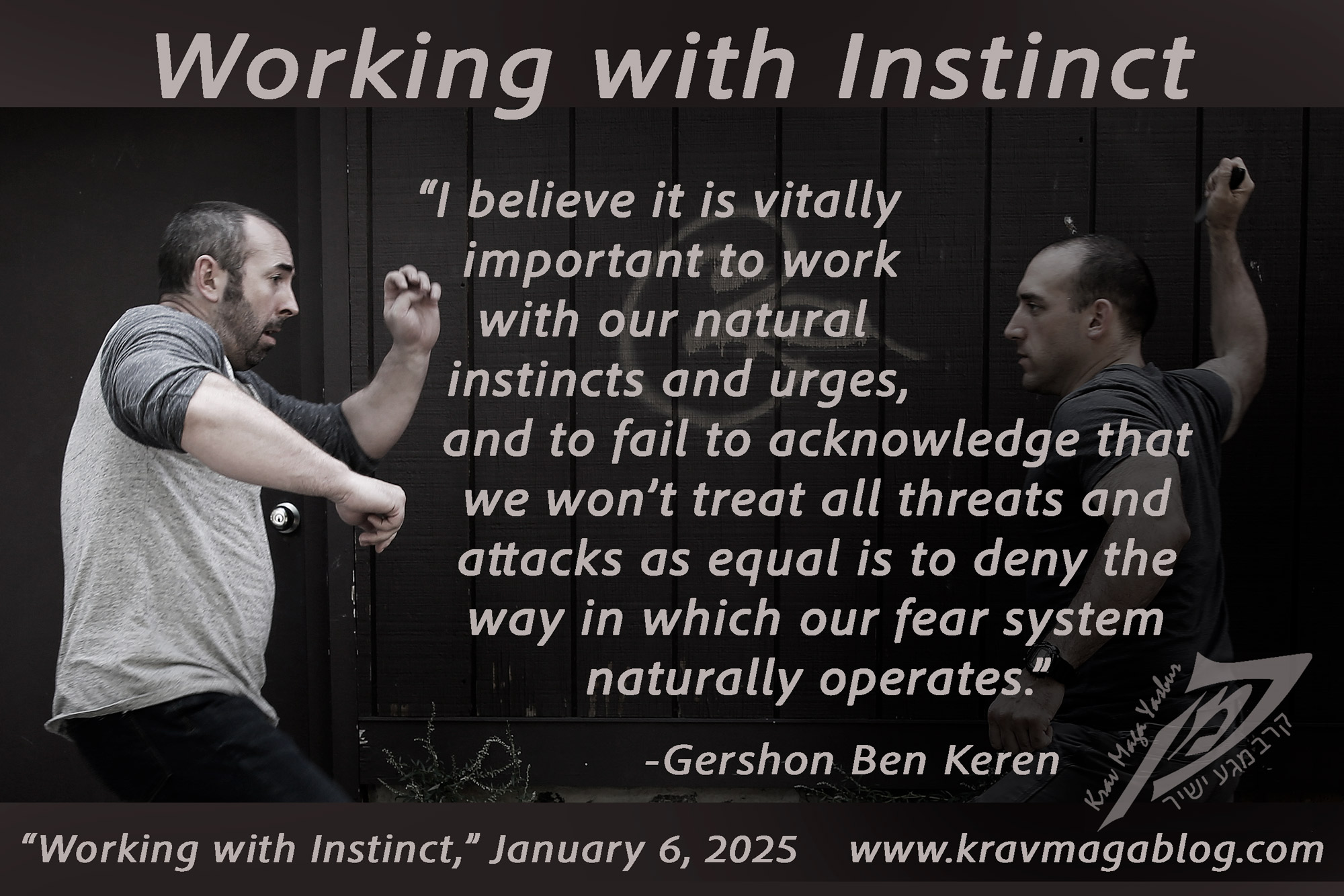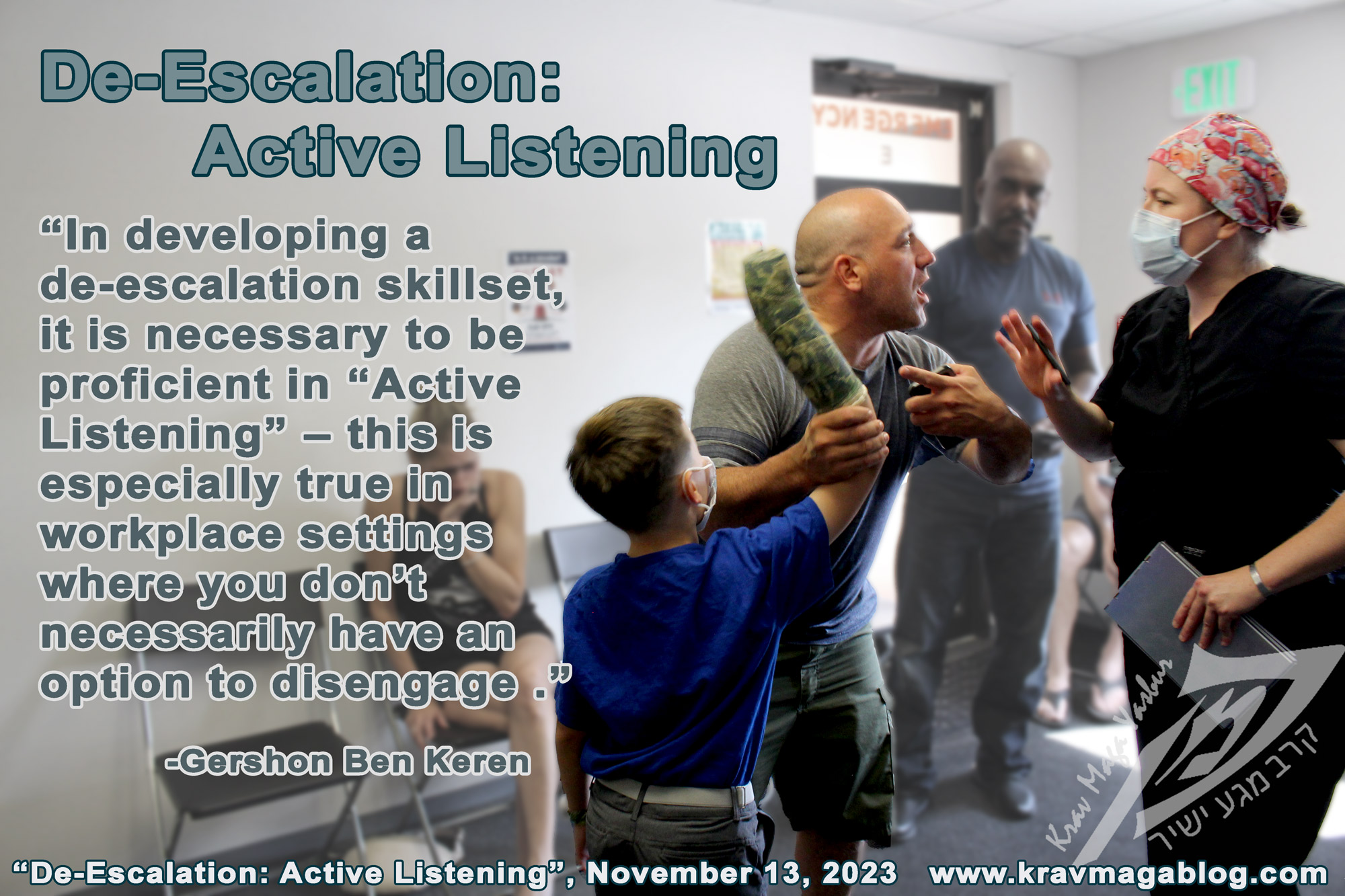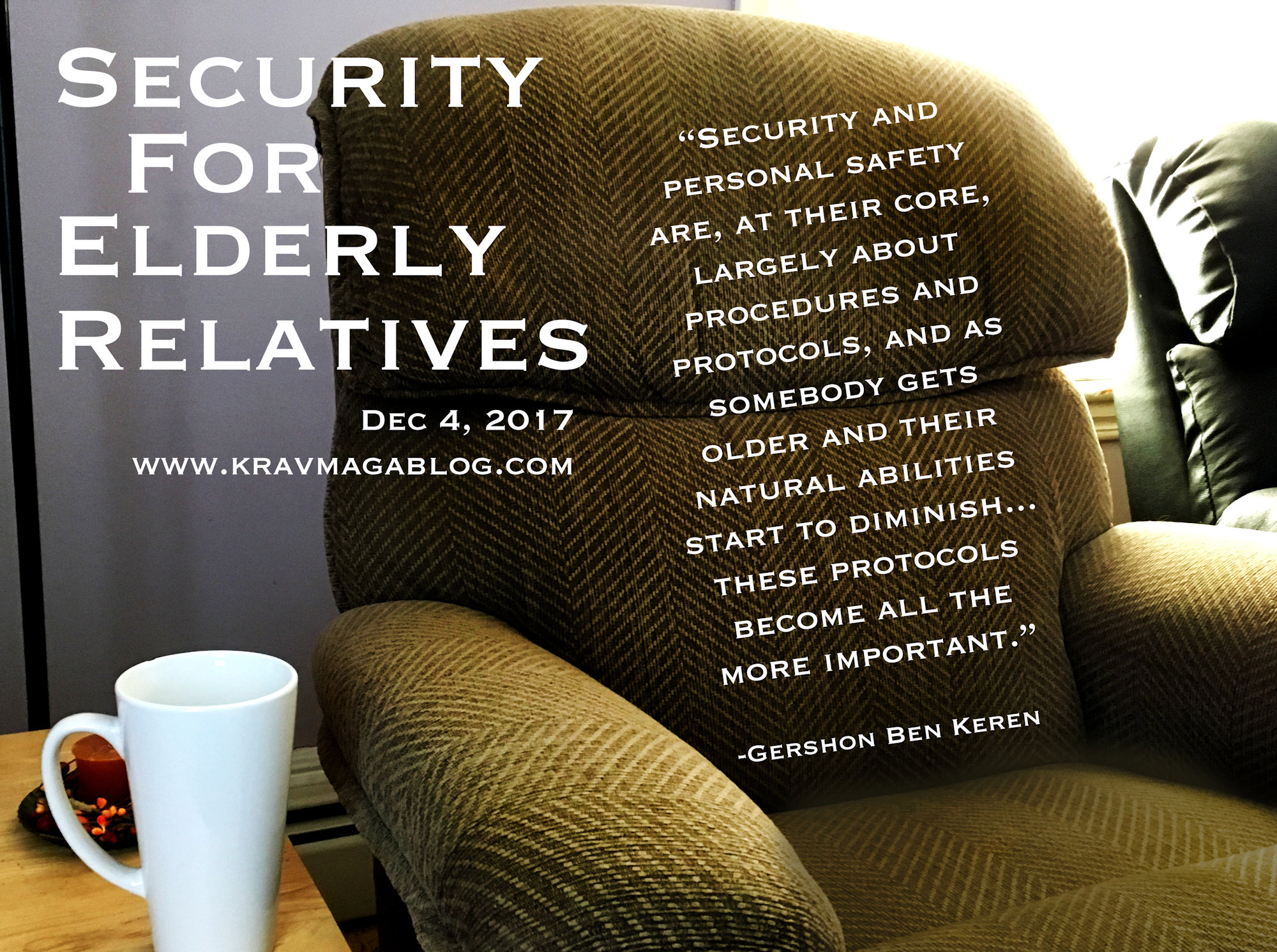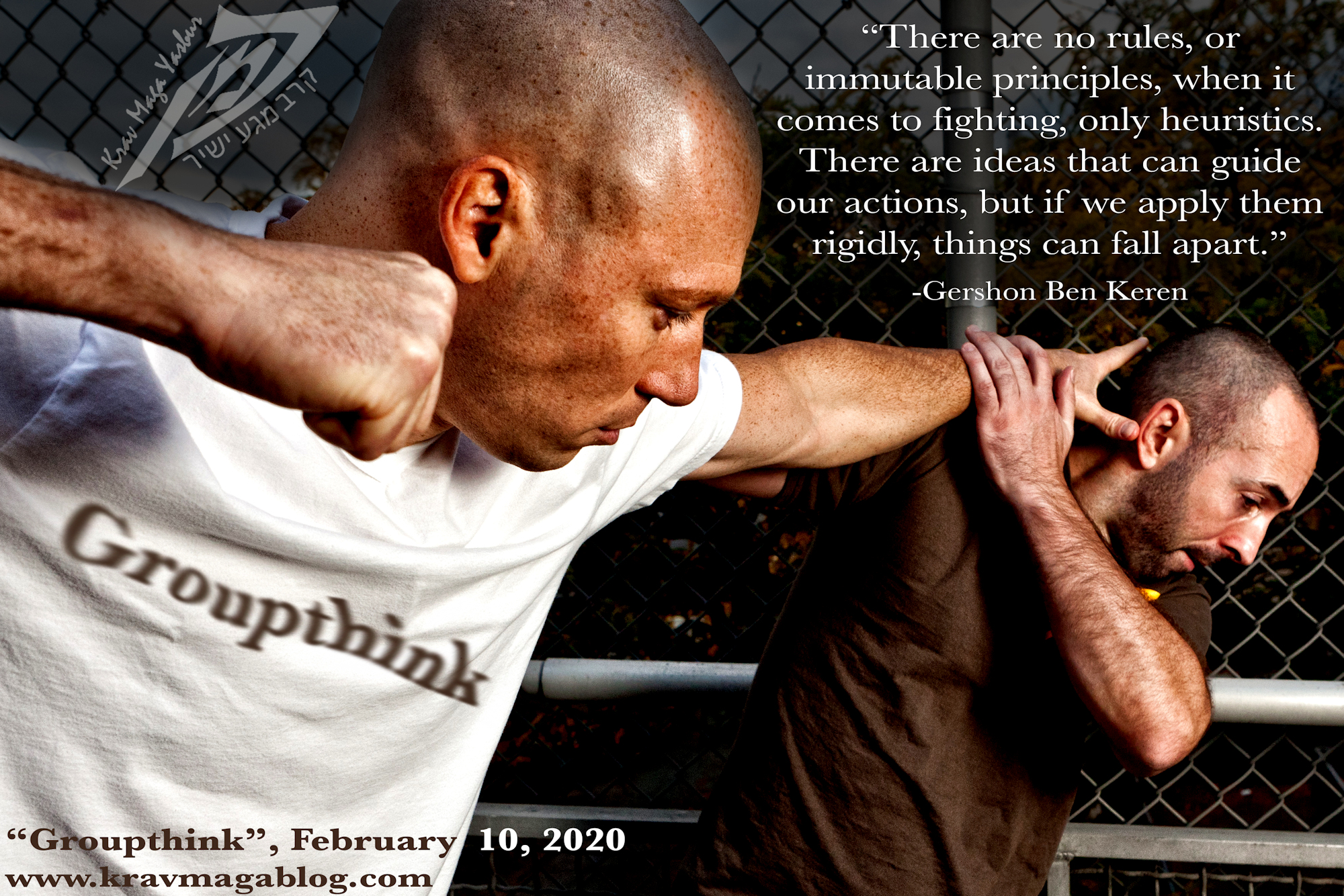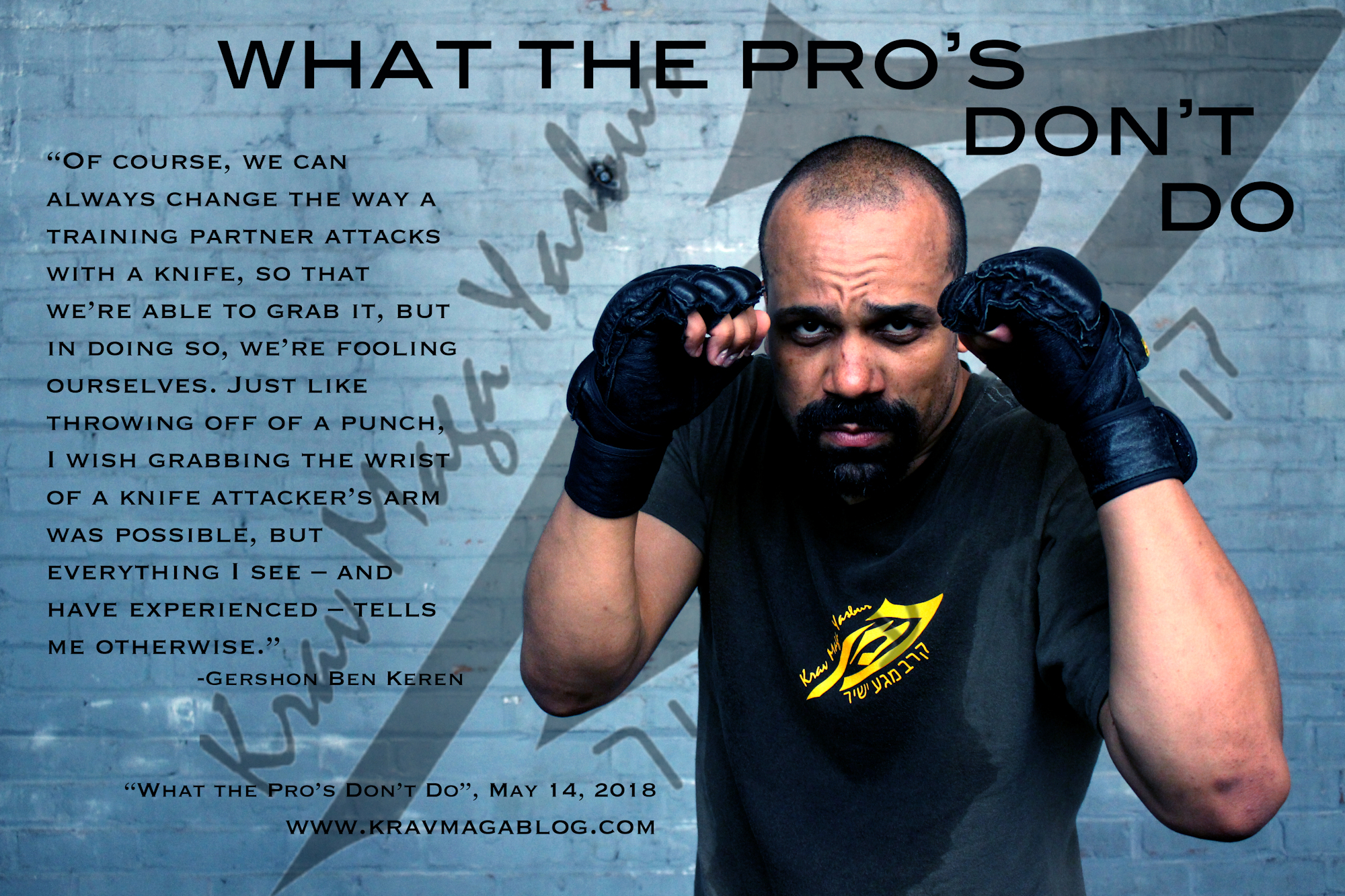What Happens Next, is an article written by Gershon Ben Keren, a 5th Degree Black Belt in Krav Maga, who teaches Krav Maga in Boston, MA. He has also authored three Amazon best-Selling Books on Krav Maga.
Most of us have been in arguments/disputes and dealt with aggressive and angry people, and probably most of the time nothing happened e.g. one or both parties walked away. This may not have been the result of good de-escalation and conflict resolution, but was instead down to the fact that neither party was that motivated to escalate the conflict into a physical confrontation. In fire safety, there is the idea of “commitment” that is used to explain why people don’t evacuate buildings when the fire alarm goes off e.g. if a person is in the middle of a meal at a restaurant, as opposed to having just arrived, they are less likely to leave/evacuate the building, as they are more committed in what they are doing. Likewise, in most spontaneous acts of aggression, individuals are more committed to what they were doing before the dispute than to the dispute itself. This is why settings where people have less commitment to what they are doing tend to be more volatile; having a drink at a bar requires less commitment than having a meal at a restaurant or watching a film at a cinema. The alcohol consumed plays it part, but so does the lack of “commitment” required to drinking e.g. a glass can easily be put down and picked up again etc. The question that many people have is if the dispute doesn’t get resolved, what happens next? Where do things go from here?
In business negotiations there is the idea of a BATNA, the Best Alternative To a Negotiated Agreement. That is, if both parties can’t resolve a dispute or a deal, what happens next. It could be that you are trying to sell your car and having gone to the dealership you know that they will give you $5000 for it, however you think it’s probably worth $6500, and that you could get something closer to that if you sold it privately. So, you set the price for it on Craigslist for $7000. This is referred to as your “Stretch Goal”, and it has to be realistic and credible e.g. if you asked for $12000 in your advert, nobody would take you seriously. You know when you negotiate with a potential buyer that you’re not going to go lower than $5000 because you can walk away from the negotiation and take the dealer up on their offer; that’s your BATNA. The problem is, we often think conflicts and disputes that result in aggression and high emotion follow a similar rational process, where both parties are weighing up the consequences of escalating the incident until it gets physical. Unfortunately, in many conflicts a large part of what is being “negotiated” is respect, which is intangible and means different things to different people. If you spill somebody’s drink over them – especially if they are amongst friends – the dispute/conflict comes down far more to a sense of being disrespected, than the drink itself. However, many people believe that the drink, is what the negotiation is about; and could perhaps be solved by offering some money for dry-cleaning, reducing the conflict to a monetary one, where the other person’s BATNA is zero dollars; and they should be grateful that they’re dealing with a reasonable person who is at least prepared to give them some form of compensation. However, when no “deal” is reached, what happens next? Do both parties simply walk away? That depends how invested they are in the conflict, and what their other “commitments” are.
When companies can’t resolve a dispute, the BATNA for both organizations may be mediation (get a third party to help both parties resolve the conflict) or arbitration; have a third-party act as a judge and decide what the resolution to the conflict should be. In an unorganized conflict where there is really nobody to perform such roles, several things can happen. For the injured/wronged party who needs some form of resolution to keep their self-respect intact, their BATNA is probably the use of physical force against the other party. With nothing put on the table, other than the “reasonable” and self-congratulatory offer to buy them another drink, they are left with few face-saving alternatives other than acting violently – and that’s usually what happens next, much to the amazement of the other party, who usually feels they’ve gone above and beyond what they could have done, and because their BATNA is to walk away, they normally end up believing that this is the same for the other party. From my experience what normally happens is that the party who believes they are wronged pauses for a moment – as they make their decision - and then swings a punch. Most people, even if not capable fighters, will believe that they no longer have any alternatives but to fight e.g. they must walk away from the “negotiating table” with something, even if that is only their self-respect, for trying to do something. What happens next is a mess.
However prepared you think you are to deal with a punch, it will always come as a bit of a surprise – even if you are expecting it, and waiting for it; this is why your BATNA in this situation should really be to act preemptively, making sure you have put in place the legal requirements to do so i.e. that you can clearly articulate and demonstrate that your assailant was guilty of assault (I have written about how to do this in previous blogs). Whether you act preemptively, or end up responding to the other party’s attack, it will soon turn into a messy affair; you will run out of space to move more quickly than you expect, things will be moving faster than you thought they would, and your punches and strikes won’t be as effective as you thought they should have been. Every class you skipped will haunt you, as you struggle to think what you should do next, as nothing you’ve been taught seems to be working as well as you thought it would, or possibly have been told it would. How it ends is dependent on so many things, with your training being only one component. If you think that’s overly pessimistic, then I’m guessing you’ve never experienced what happens next, and that’s why our training needs to contain it.
As well as practicing techniques, stress testing, developing skills, sparring, etc, we need to train potentially violent encounters end-to-end, so that we know what happens next, at each step and juncture. Fights rarely just start, without some form of face-to-face encounter which includes dialogue; it is out of this that most violence occurs, and if we can walk through scenarios looking at the different paths they can run down, we don’t have to wonder what happens next, because we’ve already experienced it in our training.
0 COMMENTS